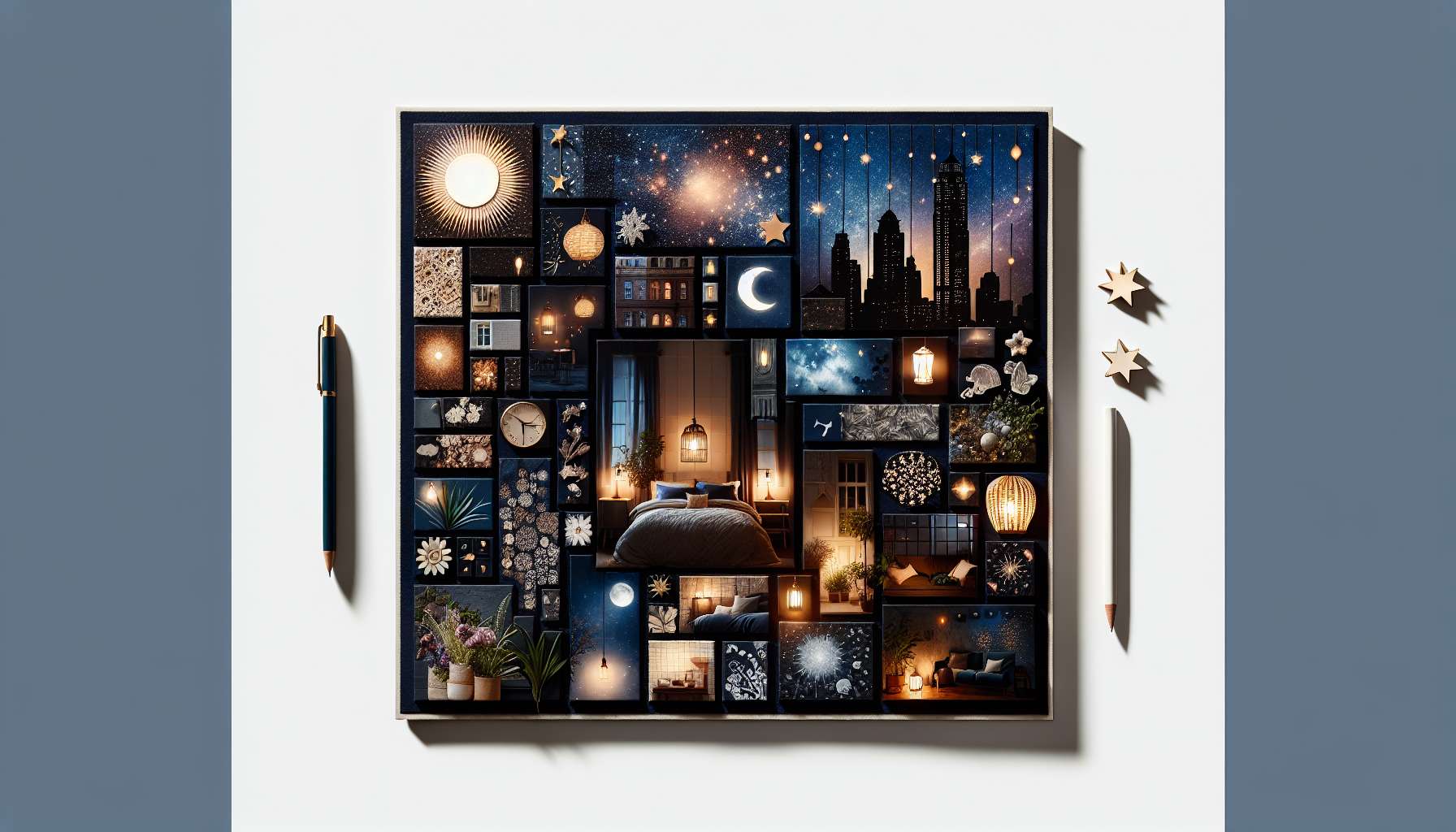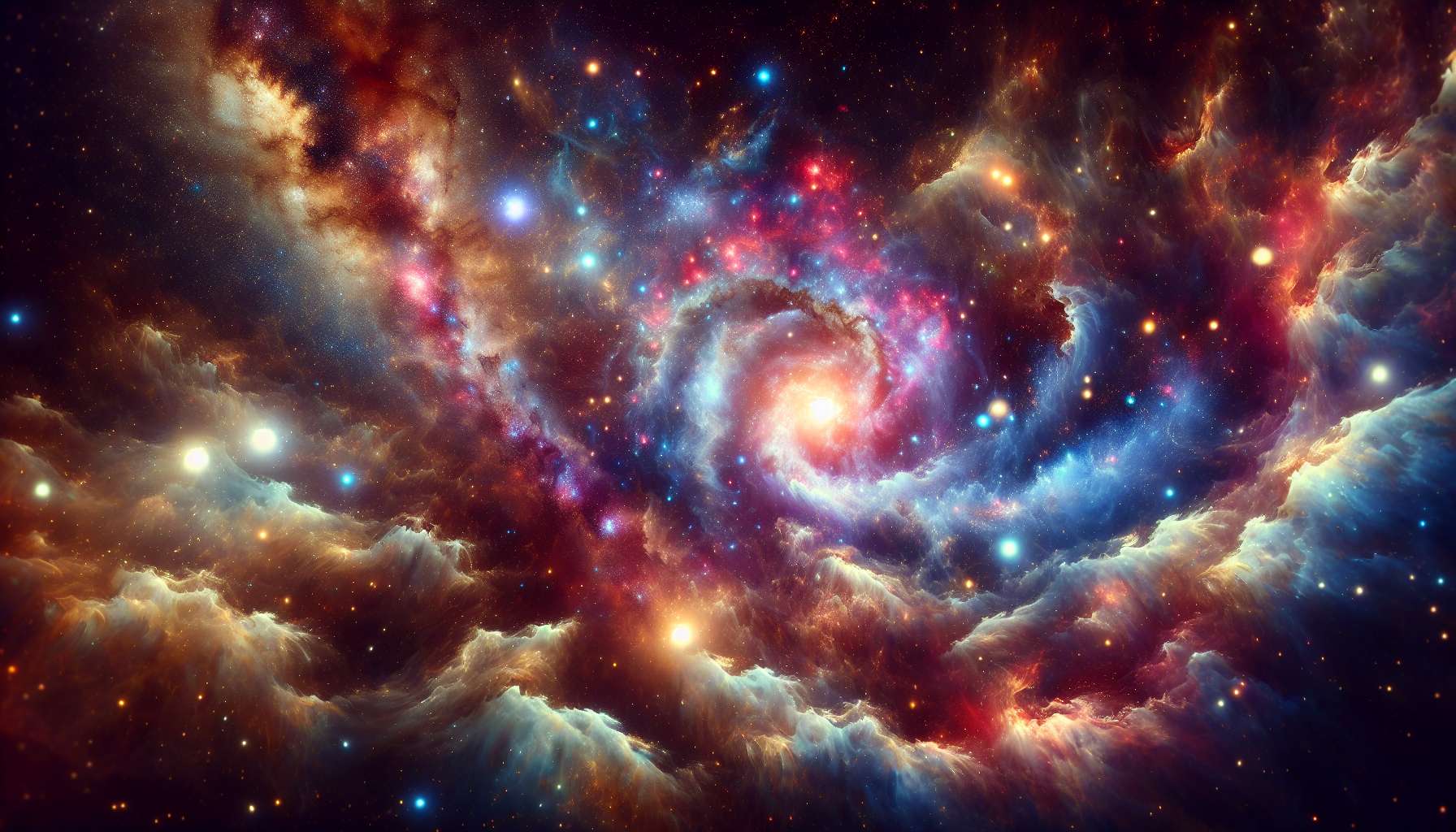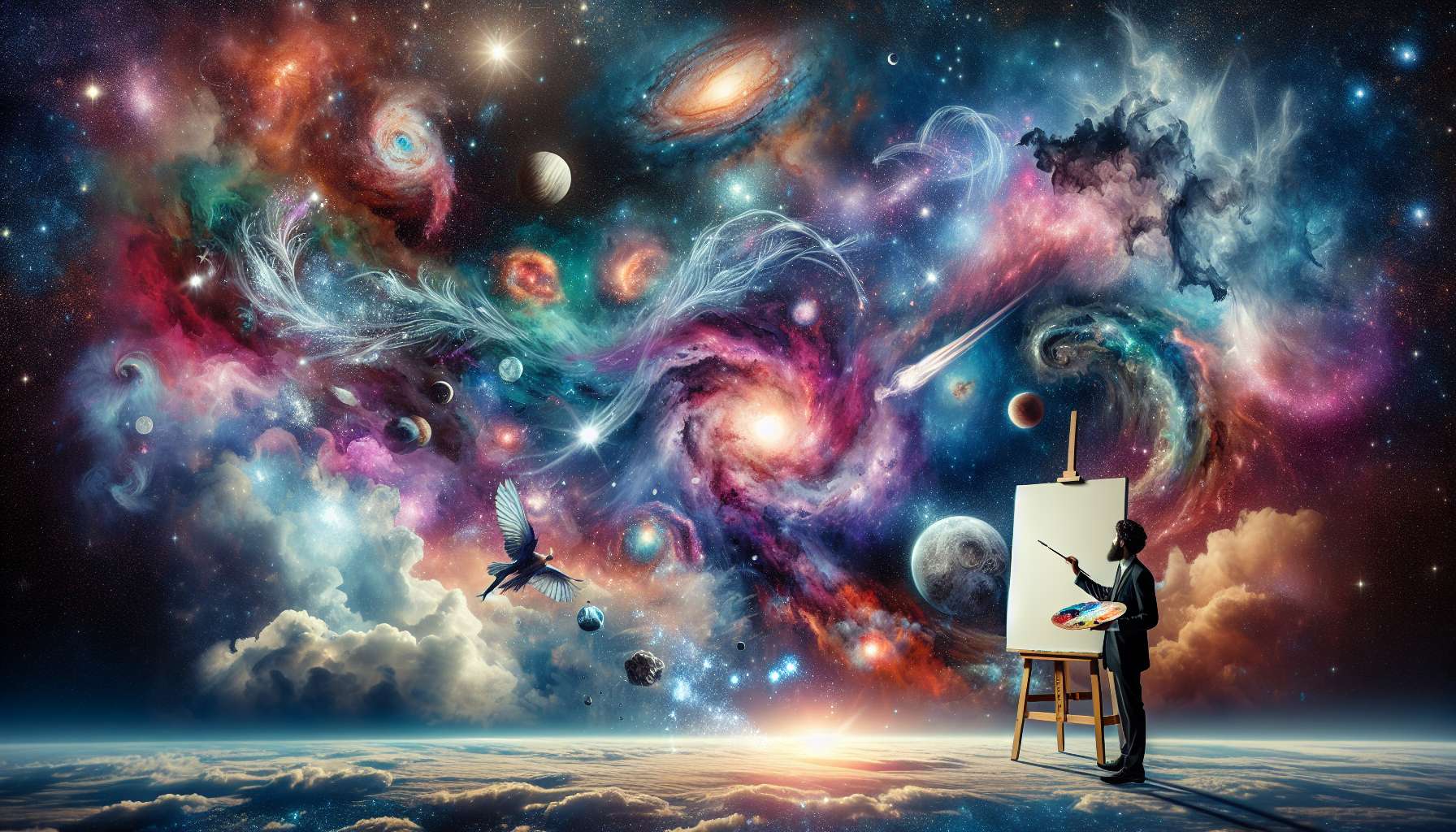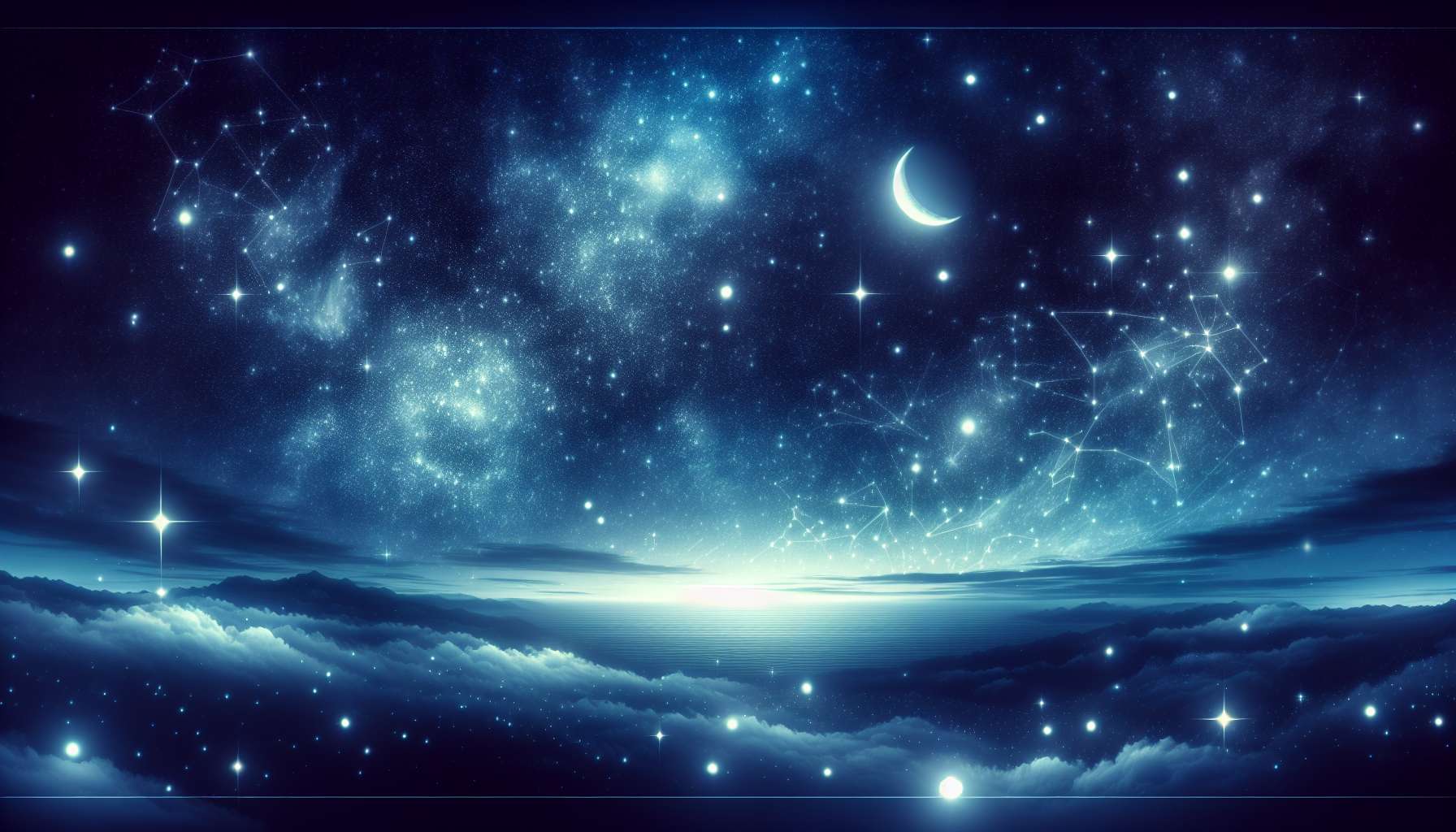Nighttime Mood Board Curation: Creating a Visual Symphony After Dark
When the sun sets and the world is wrapped in darkness, a different kind of creativity emerges. The nighttime has a unique allure, a mysterious charm that beckons artists, designers, and dreamers to curate mood boards that capture the essence of the night. From midnight blues to twinkling stars, from shadows dancing in the moonlight to the soft glow of streetlights, nighttime mood board curation is an art form that celebrates the magic of the nocturnal world.
Have you ever wondered what goes into creating a captivating nighttime mood board? How do designers evoke the feeling of the night through colors, textures, and images? In this comprehensive guide, we will delve into the world of nighttime mood board curation, exploring its origins, techniques, and impact on design and creativity. Join us on a journey through the shadows and light as we uncover the secrets of crafting a visual symphony after dark.
The Art of Nighttime Mood Board Curation
Creating a nighttime mood board is more than just arranging images on a digital canvas. It is a process that requires careful consideration of color palettes, textures, and themes that evoke the essence of the night. Designers often draw inspiration from nature, urban landscapes, and art to create mood boards that capture the mood and atmosphere of the nighttime world.
One key element of nighttime mood board curation is the use of dark, moody colors. Deep blues, purples, and blacks are often used to create a sense of mystery and intrigue. These colors can be complemented by pops of light and bright colors to add contrast and visual interest. Textures such as velvet, satin, and shimmering fabrics are also commonly used to evoke the tactile sensations of the night.
Images of stars, moonlit landscapes, and silhouettes against the night sky are popular choices for nighttime mood boards. These images can convey a sense of tranquility, wonder, and awe that are often associated with the nighttime hours. By carefully selecting and arranging these images, designers can create a visual narrative that transports viewers to a world of shadows and light.
The History of Nighttime Mood Board Curation
While the practice of mood board curation has been around for centuries, nighttime mood boards have gained popularity in recent years as a way to explore themes of darkness, mystery, and magic. The Surrealists, a group of artists and writers in the early 20th century, were among the first to explore the concept of night as a source of inspiration for creativity.
In the 21st century, social media platforms such as Pinterest and Instagram have made it easier than ever to create and share mood boards with a global audience. Designers, artists, and enthusiasts from all walks of life now have the tools to curate nighttime mood boards that reflect their unique vision and style.
Today, nighttime mood board curation has evolved into a form of self-expression and storytelling. Designers use mood boards to communicate their ideas, inspirations, and aspirations in a visually compelling way. By combining images, colors, and textures, they create a visual language that speaks to the heart and soul of the night.
Techniques for Creating a Captivating Nighttime Mood Board
Creating a captivating nighttime mood board requires a combination of creativity, skill, and intuition. Designers must carefully select images, colors, and textures that evoke the mood and atmosphere they wish to convey. Here are some techniques for creating a compelling nighttime mood board:
1. Start with a Theme
Before you begin curating your nighttime mood board, it is important to have a clear theme or concept in mind. Whether you are inspired by the stars, the moon, or the city lights, having a central theme will help guide your design choices and create a cohesive visual story.
2. Choose a Color Palette
Dark, moody colors are central to nighttime mood board curation. Deep blues, purples, and blacks can set the tone for your board and create a sense of mystery and intrigue. Consider adding pops of light or bright colors to add contrast and visual interest.
3. Select Images Carefully
Images are the heart of any mood board, and selecting the right images is key to creating a captivating nighttime mood board. Look for photos that evoke the mood and atmosphere of the night, such as stars, moonlit landscapes, and shadowy figures. Arrange your images in a way that tells a visual story and captures the essence of the nighttime world.
4. Experiment with Textures
Textures can add depth and dimension to your nighttime mood board. Consider incorporating velvet, satin, or shimmering fabrics to evoke the tactile sensations of the night. Experiment with different textures to create visual interest and intrigue.
5. Play with Light and Shadow
Light and shadow are essential elements of nighttime mood board curation. Use light and shadow to create drama, depth, and contrast in your board. Play with different lighting effects, such as soft glows or harsh shadows, to enhance the mood and atmosphere of your nighttime theme.
The Impact of Nighttime Mood Board Curation on Design and Creativity
Nighttime mood board curation has a profound impact on design and creativity, inspiring artists, designers, and creators to explore themes of darkness, mystery, and magic. By delving into the world of the night, designers can tap into a rich source of inspiration that can fuel their creative process and push the boundaries of their work.
Creating a nighttime mood board allows designers to experiment with new colors, textures, and concepts that they may not have considered before. It encourages them to think outside the box and explore unconventional ideas and themes. By immersing themselves in the world of the night, designers can unlock new levels of creativity and innovation.
Furthermore, nighttime mood board curation can have a positive impact on mental health and well-being. The act of curating a mood board can be a therapeutic and meditative process, allowing designers to express their emotions, thoughts, and feelings in a visual and creative way. It can also help designers relax and unwind after a long day, providing a sense of peace and tranquility.
Expert Opinions on Nighttime Mood Board Curation
We spoke to renowned designer and artist, Emily Black, about the importance of nighttime mood board curation in the creative process. According to Emily, “Creating a nighttime mood board allows me to explore themes of darkness, mystery, and magic in my work. It helps me push the boundaries of my creativity and discover new ideas and concepts that I may not have considered before.”
Emily also emphasized the therapeutic benefits of nighttime mood board curation, stating that “Curating a mood board is a form of self-expression and storytelling that can be incredibly cathartic. It allows me to connect with my emotions and thoughts in a visual way, helping me find peace and clarity in a chaotic world.”
Common Misconceptions About Nighttime Mood Board Curation
One common misconception about nighttime mood board curation is that it is limited to a specific style or aesthetic. In reality, nighttime mood boards can encompass a wide range of themes, from urban landscapes to celestial bodies to abstract concepts. Designers are free to explore any aspect of the night that inspires them, making nighttime mood board curation a versatile and flexible art form.
Another misconception is that nighttime mood boards are only suitable for certain types of projects or clients. In truth, nighttime mood boards can be used in a variety of design projects, from branding and marketing to interior design and fashion. The key is to tailor the mood board to the specific needs and preferences of the client, using the nighttime theme as a source of inspiration and creativity.
Conclusion
In conclusion, nighttime mood board curation is a powerful tool for designers, artists, and creators to explore themes of darkness, mystery, and magic. By delving into the world of the night, designers can tap into a rich source of inspiration that can fuel their creative process and push the boundaries of their work. Nighttime mood board curation allows designers to experiment with new colors, textures, and concepts, encouraging them to think outside the box and explore unconventional ideas and themes.
Whether you are a seasoned designer or a budding artist, creating a nighttime mood board can open up new possibilities and spark your imagination. So, why not take a journey through the shadows and light and discover the magic of nighttime mood board curation for yourself?




